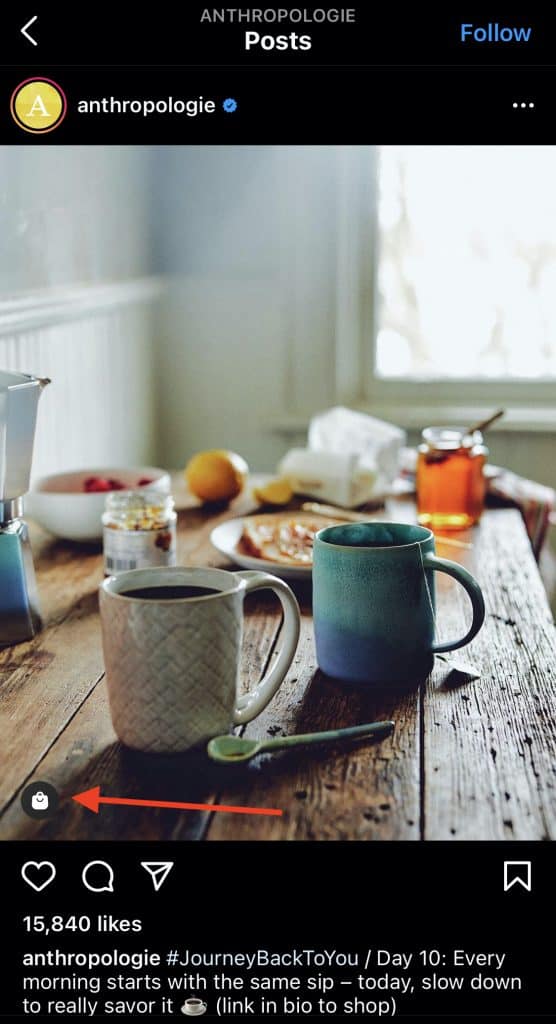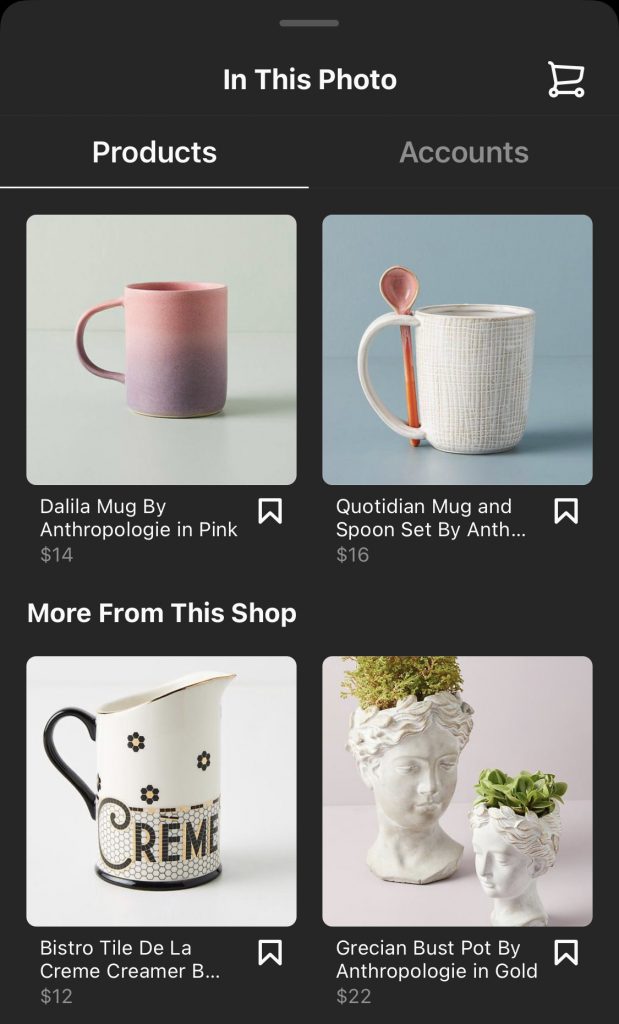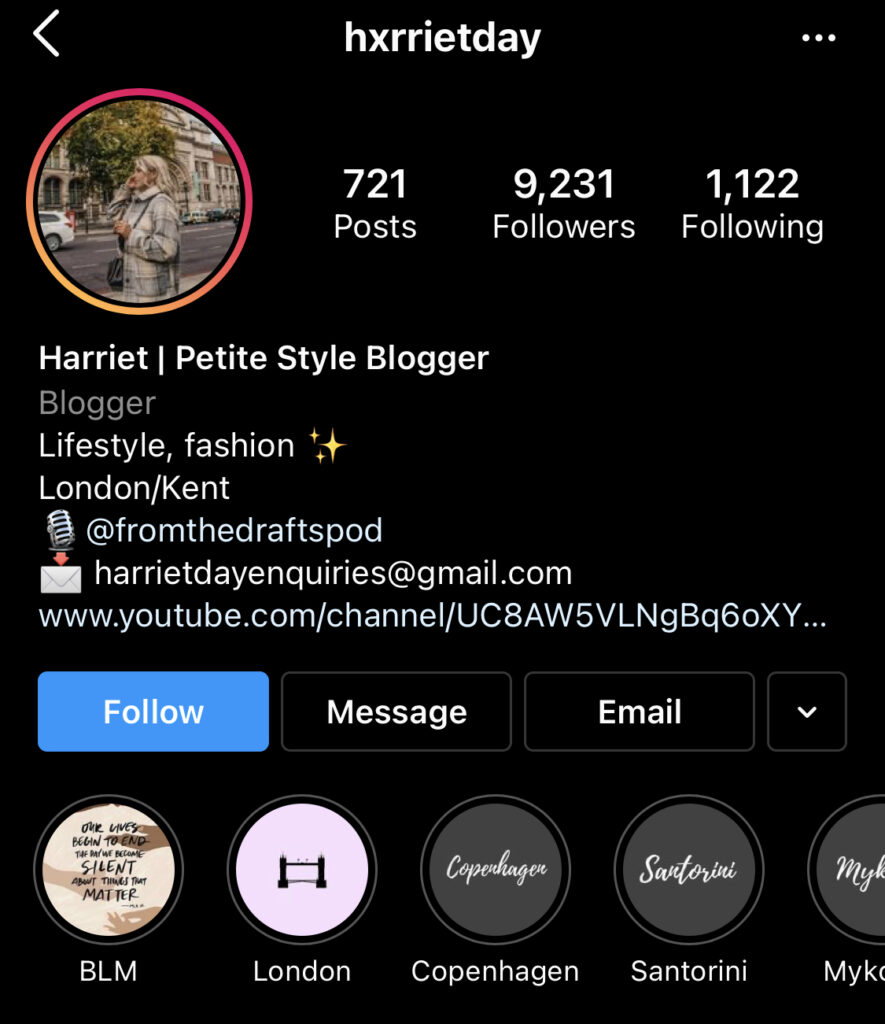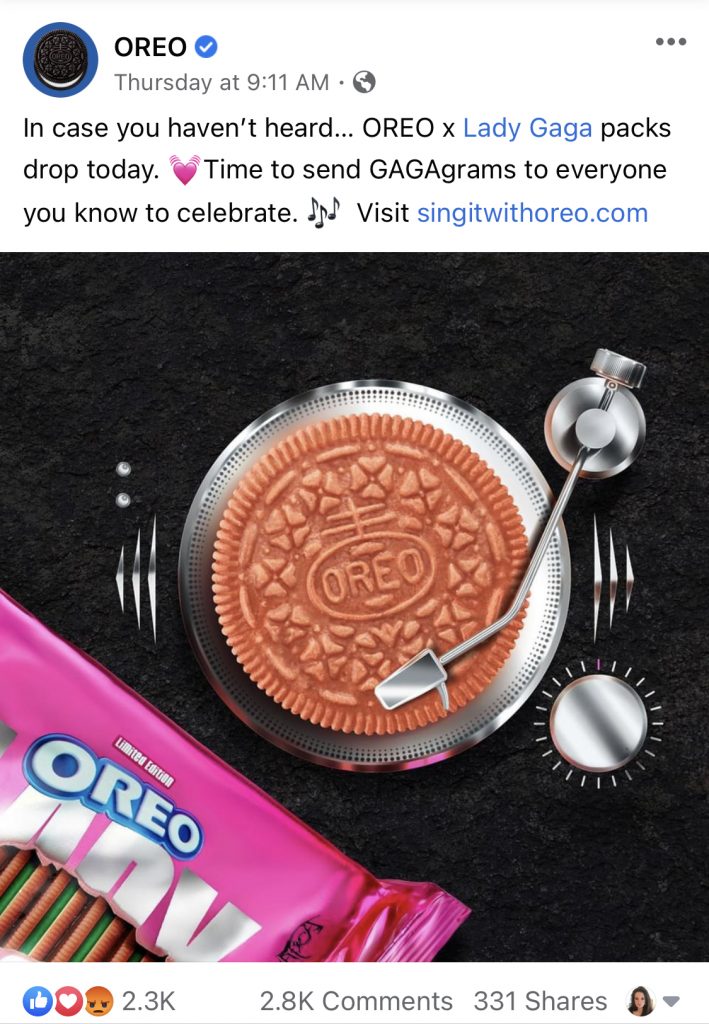There are plenty of social media sites that have stuck around for years, even decades. But what doesn’t remain constant is how they’re best used, especially when it comes to marketing. Every year, and sometimes even more frequently, brands, individuals and marketing teams have to reconsider what they’re doing in terms of promotions. Why? To keep up with social platform algorithms, audience preferences and trends. In 2021, here’s what you need to know to market using social media trends.
Dynamic Ads
Brands are continuing to spend their money on social ads, and you may be even more willing to spend a higher portion of your budget on them in 2021. Why? Consumers are getting more comfortable with shopping online, especially via social platforms.
Source: Anthropologie on Instagram
Source: Anthropologie on Instagram
Combine that with advanced ads – like Facebook’s personalized ads, which change format based on who is seeing it – and you have the opportunity for serious targeting. Bonus: Consumers can purchase right through the social platform instead of being redirected to another website. That means they’re more likely to go through with the transaction because there are fewer roadblocks.
Augmented Reality and Virtual Reality
In the never-ending hunt for delivering the next best user experience, brands are turning to AR and VR to get audiences more engaged than ever. Social platforms that already have an integrated camera option (which is most of them) offer the perfect opportunity to develop this type of marketing campaign. For example, a furniture store can create an AR-powered app that “places” a chair in your apartment so that you can see how it fits with the rest of the décor. Travel companies can offer a VR-based experience where people can “visit” their destination before even leaving their home.
Source: IKEA Place app
Nano Influencers
Influencer marketing is undeniably popular, and we can’t imagine it’s going away any time soon. However, brands are getting savvier when it comes to the influencers they work with and what they expect to see as results. First, fake influencers are something to watch out for. Second, likes aren’t cutting it anymore when it comes to a viable engagement metric (a bit more on that later). Since influencers tend to charge a lot, brands are now making them rationalize their fees with harder, more effective data. As a result, nano influencers are getting their time to shine. Miniature-sized influencers have very dedicated followings, which means higher quality even if there’s lower quantity. Brands love that.
Source: hxrrietday on Instagram
Social Communities
By the end of this article, you may notice a recurring theme: Nurturing a high-quality audience, regardless of how large or small it is. The focus on social communities is just another example of that. In 2021, brands will prioritize creating online communities of core audience members. Within those groups, members can interact with one another and with the brand. This type of close-knit, private community is unbeatable when it comes to getting feedback, asking for suggestions, sharing customized content and solving problems. It’s also an excellent place to test out new ideas, products and services before releasing them to the masses.
Social Chatbots
If more consumers are comfortable shopping online, that means that they’re also troubleshooting online. But chatbots of the past left a lot to be desired. They could only offer the most basic type of support. That rarely made a difference and left users still needing to talk to a person – which only extended the entire troubleshooting process. Enter artificial intelligence-powered chatbots of 2021. They’re wiser and much more helpful, and they can actually make a difference when it comes to customer support. That means two things. Users get their issues solved quickly and without (always) having to speak with an actual human. Also, smaller companies can serve customers even if they don’t have a ton of manpower.
Smarter Targeting
If you’ve only used basic demographics when targeting your ads, it’s time to branch out. Treat your audience like it’s made up of complex people with varying interests and purposes. When you only target based on the most basic of the basics, like gender or age group, you’re missing out on unifying themes. Most people aren’t connected simply because they were born during a certain generation, for example. Instead, target your ads and other marketing efforts based on more emotional demographics, like what they’re passionate about. You’ll reach a wider audience that’s not limited by defining features that don’t actually matter too much.
Richer Metrics
The metrics you used at the start of your business or marketing efforts may not be the same metrics you care about now (like brand awareness versus sales). Which metrics matter most to you now? Are you focusing on comments and direct interaction with customers, or do you care more about users taking specific actions or how much revenue results from a campaign?
Consider this: Surface-level metrics aren’t super worthwhile anymore. For example, maybe you cared about how many likes your content received in the past. Now, with some social platforms getting rid of likes altogether and brands focusing on social listening (so they can engage in the conversation), marketing trends are diving into the deep end. What’s being talked about is now more important than how many people are talking.
Social Media Trends That Aren’t Slowing Down
These social media trends may not be new in 2021, but they’re still worthwhile, and we urge you to keep them planted in your marketing campaign.
Source: Oreo on Facebook
- Ephemeral Content: This content is short-lived and then disappears, like Stories on Instagram and Snapchat. Users (and marketers) love this type of content for two reasons. First, it’s bite-sized and easy to digest. Second, the fact that it’s going to disappear soon creates a sense of urgency. Make this type of content interactive, and you’ll get even more out of it.
- Live Video Streaming: Video marketing’s been huge for a long time now, and a number of platforms have the tech to let you stream live. Doing so means you can create content on-the-fly (leaving it unpolished is part of the point). You can also engage with followers in-the-moment. That’s especially important for brick-and-mortar stores that have had to move their in-store happenings online.
- User-Generated Content: UGC is almost too good to be true – your audience creates the content for you, and you just reap the benefits. With creative strategies, like branded hashtags or competitions that encourage people to share their experience with your products or services, you can get your audience working for you. Plus, this increases social proof and word-of-mouth marketing. What’s better than that?
- Video Content: Live video isn’t the only type that’s continuing its wave of popularity. Both short- and long-form videos perform amazingly on social media. If your brand isn’t on YouTube yet, you may want to be. While you can post video to most social platforms, YouTube is becoming the place for your video content to be.
Choosing the Right Platforms to Try Out Social Media Trends
Lastly, we need to mention this: Just because you can be on every single social platform doesn’t mean you should be. In 2021, it’s more important than ever to cherry-pick the social sites that will be best for your business and audience. Just like we advised you regarding influencer marketing, quantity is not as important as quality. Your reach may be wider on, say, Facebook, but if you’re a retail company that specializes in home goods, Pinterest is where you want to be (and maybe Instagram, too). Do what’s best for you long-term, not just what looks flashiest right now.
Final Thoughts on Social Media Trends
Last year changed just about everything, and social media marketing didn’t get away unaffected. While offline customer experiences have certainly taken a nosedive, the world of online marketing has had new life breathed into it. And luckily, several trends that have been around will continue to be important in 2021, which means you don’t have to completely overhaul your strategy. We feel that the new additions are thoughtful ones, prioritizing audiences, personalizing experiences and helping marketers focus only on what’s most important (while leaving the rest thankfully behind).
Another social media trend that’s still kicking is local targeting. Do you have a local brand that you want to promote to people in your area? Check out our article on how to get started with geofencing marketing.








